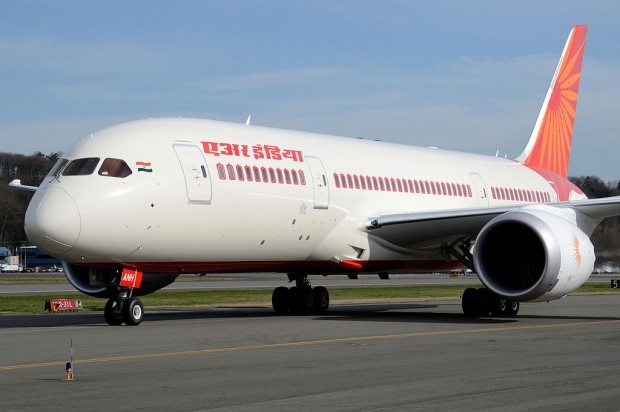Air India is expecting to report better revenues in Financial Year 2016-17 as compared to FY 2015-16. In fact, the company is expecting to have total revenue of Rs. 22,521 crores as compared to the figure of Rs. 20,526.11 crores in FY 2015-16 which is an improvement of around 9.7 per cent over the previous year.
The main reason for this increase in revenues is an improvement in capacity utilisation in terms of Revenue Passenger Kilometers (RPKMs) by 6.8 per cent and an increase in Passenger Carriages by 6.2 per cent when compared to the previous year 2015-16. The Passenger Load Factor is also expected to increase by 1.2 per cent in absolute terms i.e. from 75.6 per cent in FY 2015-16 to 76.4 per cent in FY 2016-17.
From November, 2015, in addition to Riyadh route, B777-200 LR was deployed on Delhi-London route (AI-161/162) and from December, 2015 on Bangalore-Delhi-San Francisco route (AI-173/174). This has helped in increasing operating utilisation of B777-200 LR over 14 hours per day from November, 2015 onward.
The Government had approved a Turnaround Plan (TAP) and Financial Restructuring Plan (FRP) for operational and financial turnaround of Air India. The TAP and FRP provides equity infusion of Rs.30,231 crores up to year 2021 subject to achievement of certain milestones as laid down in the TAP and FRP. The Company has made substantial progress in both Operational as well as Financial Areas as per TAP Milestones. As a part of the Turnaround Strategy for Air India, the company, with the overall support of the govt., has initiated a number of steps in order to cut costs and losses. These steps, inter-alia, include; Route rationalisation of erstwhile AI & IA route and elimination of route network involving parallel operations; Rationalisation of certain loss making routes; Phasing out of old fleet and consequential reduction in maintenance cost; Joining of Star Alliance; Enhanced utilisation of new fleet resulting in production of higher Available Seat Kilometers (ASKMs); Closure of overseas offline offices at certain locations; Introduction of PSS (Passenger Service System) to have single code and SAP ERP based solutions throughout the organisation in terms of increase in revenue and decrease in cost.
The following steps have also been taken by Air India to improve revenues, including; Introduction of New Routes; Preferred seat selection on domestic and international routes; Flash Sale of seats to increase revenues and PLF; To utilise unsold inventory by launching of airfare equivalent to Rajdhani II-AC fare on select sectors; Dynamic pricing and introduction of Advance Purchase fare; Various sales and Marketing Initiatives.







